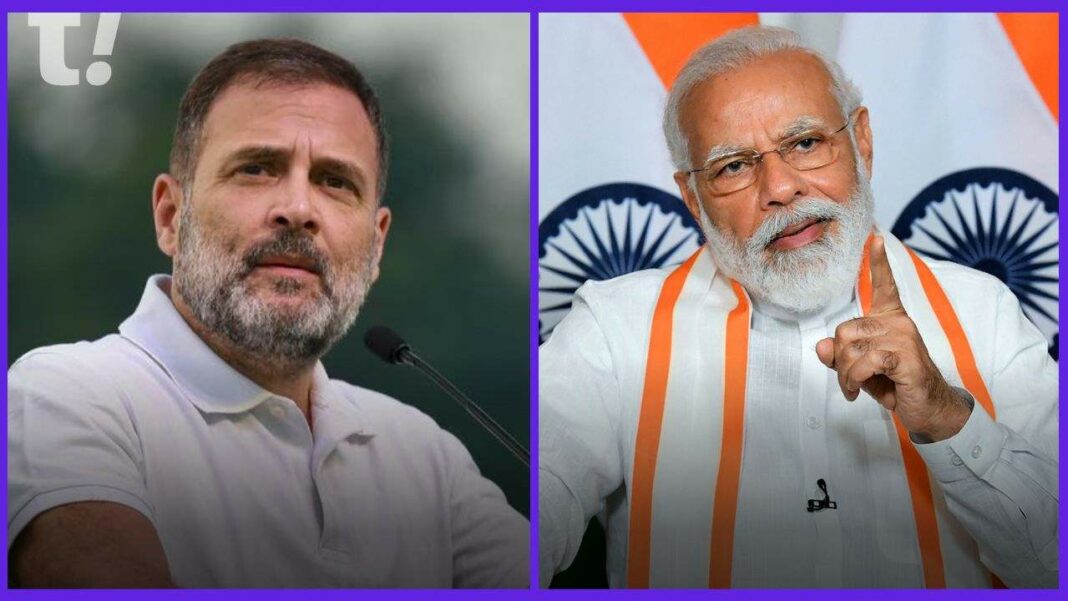Arkreach, an AI-powered communications analytics solution, recently conducted an extensive analysis of online media articles around the ongoing General Elections to measure the significant impact of the media and news about the two national political contenders, the incumbent Prime Minister Narendra Modi and the Indian National Congress leader, Rahul Gandhi. This analysis examines online news media coverage of key political figures during the 2024 Indian elections, offering valuable insights into the role of media in shaping public opinion.
The extensive coverage analysis was conducted across 26,416 online news articles from 418 unique publications, spanning across 10 Indian languages, for the period of March 20, 2024 (coinciding with the issuance of the election gazette notification for the first phase) to May 25, 2024 (up until phase 6) – providing a comprehensive media narrative around the elections to illustrate the trends in the online media.
Through its findings, the analysis depicted the following key statistics and highlights:
In terms of volume, PM Modi was featured in 13,848 articles, as compared to Rahul Gandhi, who appeared across 7,616 articles, marking an 82% difference – which may be attributed to the PM’s incumbent status and frequent public appearances, resulting in larger media attention.
PM Modi has a slightly more diverse regional language coverage compared to Rahul Gandhi. While both leaders receive notable coverage in Hindi and English, PM Modi has a robust presence in additional languages such as Bangla, Kannada, Malayalam, Tamil, and Punjabi.
The database indicated that PM Modi’s total coverage reflected a 19.3% positive sentiment (in 2,672 articles), as compared to Rahul Gandhi’s total coverage, of which only 12.7% (964 articles) depicted positive sentiments towards him.
Despite fewer articles attributed to Rahul Gandhi, his content garnered significantly higher social media engagements than that of PM Modi (a 304% difference), thereby suggesting a greater interest in his coverage.
Negative sentiment articles attributed to PM Modi only constituted 5.2% (719 articles) of his total coverage, with a reach of 1.35 million. At the same time, negative sentiment articles made up 4% (308 articles) of the total coverage, with a reach of 6.68 million. Despite a lower percentage of negative articles attributed to Rahul Gandhi than that to PM Modi, the higher reach indicates a wider distribution of negative news concerning Mr Gandhi.
As per the database, 75.5% (10,457 articles) of the total articles attributed to PM Modi were neutral, with a significant reach of 73.98 million. Concurrently, 83.3% (6,344 articles) of the total articles attributed to Mr Gandhi were neutral, with a reach of 77.60 million.
Speaking on the report, Vishal Sharma, Chief Strategy Officer at Arkreach, noted, “As we analyze the complexities of media coverage during the 2024 Indian elections, it becomes evident how strategic language diversity and targeted engagement shape public perception. Our report highlights the nuanced approaches of both PM Narendra Modi and Rahul Gandhi, reflecting their distinct strategies to connect with a diverse electorate. At Arkreach, we are committed to providing deep insights that help decode these media narratives, empowering stakeholders with data-driven understanding.”
The comprehensive analysis highlights the significant difference in the dissemination and coverage of media concerning the two national political leaders. This immense difference highlights the significant role of social media in the realm of the ongoing elections, allowing political leaders to broaden their reach to the younger demographic and those highly active on social media.
This analysis aims to provide a unique insight into the evolving public perception of the two leaders, molded by their unique media strategies to cater to their respective populaces for influencing the outcome of the elections.
Reach Analysis:
PM Modi’s articles reached 28.44 million readers at their peak on Tuesdays, with the lowest reach on Saturdays at 5.25 million.
Rahul Gandhi’s articles reached 32.28 million readers at their peak on Tuesdays, with the lowest reach on Sundays at 5.75 million.
PM Modi held a slightly higher share of voice at 1.53%, compared to Gandhi’s 1.34%. This marginal difference underscores Modi’s stronger media presence during the analysis period.
Media Diversity:
PM Modi’s media presence was more diverse, with coverage in 241 unique publications, compared to Gandhi’s 177.
Both leaders received substantial English and Hindi coverage, reflecting their strategic focus on key linguistic demographics.
Influence of Key Events:
Significant political events and statements led to spikes in media coverage for both leaders. For instance, PM Modi’s peak coverage days included his responses to controversial topics and major campaign activities, while Gandhi’s peaks were tied to his public appearances and critiques of government policies.





